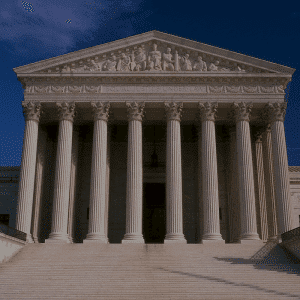
A unanimous U.S. Supreme Court recently narrowed the “safe harbor” protections provided to transferees in claw back litigation typically brought by bankruptcy trustees, liquidating trustees, and creditors’ committees. The case is Merit Management Group, LP v. FTI Consulting, Inc., 138 S. Ct. 883 (2018).
The Bankruptcy Code allows trustees to set aside and recover certain transfers for the benefit of the bankruptcy estate, including the allegedly fraudulent transfer at issue in Merit Management. It also sets out a number of limits on the exercise of these avoiding powers, including the securities safe harbor of section 546(e), which provides that “the trustee may not avoid a transfer that is a . . . settlement payment . . . made by or to (for for the benefit of) a . . . financial institution . . . or that is a transfer made by or to (or for the benefit of) a . . . financial institution in connection with a securities contract.”
Valley View Downs and Bedford Downs Management entered into an agreement under which Valley View — if it got the last harness racing license in Pennsylvania — would purchase all of Bedford Downs’ stock for $55 million. Valley View was granted the license and arranged for the Cayman Islands branch of Credit Suisse to wire $55 million to third-party escrow agent Citizens Bank. The Bedford Downs shareholders deposited their stock certificates into escrow with Citizens, which then disbursed the $55 million, including to petitioning shareholder Merit Management.
Valley View, unable to achieve its goal of opening a racetrack casino, eventually filed for Chapter 11 bankruptcy, a trustee (FTI Consulting) was appointed, and FTI sought to avoid the transfer from Valley View to Merit for the sale of Bedford Downs’ stock as a constructively fraudulent transfer under Bankruptcy Code section 548. Merit contended that the 546(e) safe harbor barred FTI from avoiding the transfer because it was a settlement payment made by, to, or for the benefit of two financial institutions, Credit Suisse and Citizens. The District Court agreed with Merit, but the Seventh Circuit reversed holding that the safe harbor did not protect transfers like these where financial institutions served as mere conduits.
The Supreme Court affirmed the Seventh Circuit and held that the only relevant transfer for purposes of the 546(e) safe harbor is the overarching transfer that the trustee seeks to avoid, in this case between Valley View and Merit, not any component of the transfer involving the financial institutions. The safe harbor protects a transfer only if the transferor or the transferee in the transfer to be avoided is itself a financial institution or other covered entity. Since the parties did not contend that either Valley View or Merit was a covered entity under 546(e), its protections were not available as a defense to avoidance.

